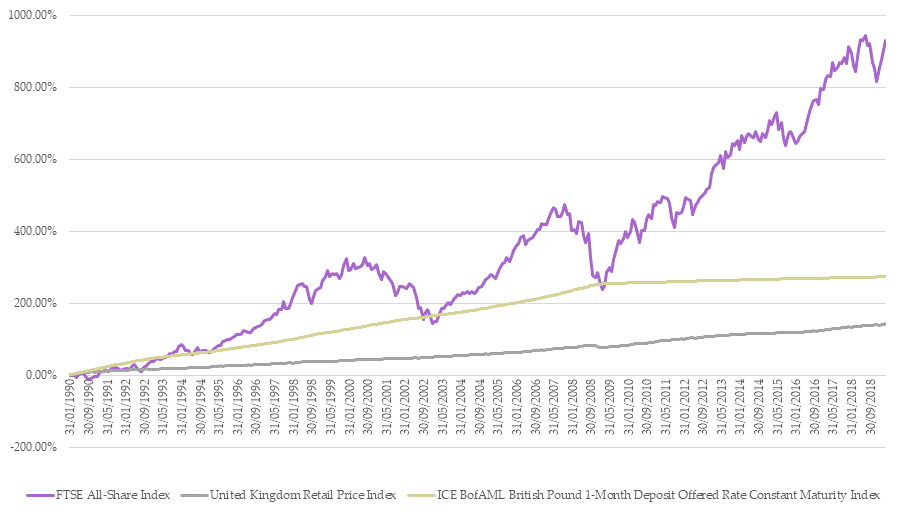With a large sum of money to invest, say greater than £100,000, would you invest in one tranche or would you feel more comfortable investing in smaller sums spread gradually over time?
This is a timeless conundrum that most clients have faced at some stage.
To answer this question, we need a crystal ball, which, of course, we do not have.
I have said many times before we admit to having absolutely no idea which way the market is heading in the short term. In the absence of any magical forecasting ability, is there any helpful guidance that we can provide?
The natural instinct for many is to opt for the phased approach – few of us want to take the risk of getting our timing wrong and face the inevitable sense of regret that would ensue. Investment phasing is essentially another form of diversification, which can be used to reduce risk alongside asset class diversification – that is, spreading a portfolio as widely as possible among unrelated investments.
Phasing diversification is no free lunch.
However, unlike asset class diversification, phasing diversification is no free lunch; this is an insurance policy with a potential cost. The historical record shows that if maximising investment returns is the key objective, investing in one go is the better choice more often than not.
This is simply because the markets go up with a higher frequency than they go down. Let’s look at an example:
The UK stock market (as measured by the FTSE All Share index) between December 1989 and April 2019 spent 68.09% of the time moving up and 31.91% of the time moving down. Frequency is only part of the story – what about magnitude? Perhaps unsurprisingly, this is even more in favour of investing now. The annualised long term real return (including inflation) on UK equities between December 1989 and April 2019 is 5.89%. If you’re not in the market the long-term cash equivalent return is 1.47%.
This is demonstrated in the table below which tracks the FTSE All Share index, the UK retail price index and GBP:
Graph tracking FTSE all share index, UK retail price index & GBP

(Source: Dimensional Fund Advisors Returns 2.0, return data from 31/12/1989 to 30/04/2019)
Past performance is not indicative of future results and no representation is made that the stated results will be replicated.
Clearly, without the ability to forecast, it’s better to be in the market than out. Moreover, if you get the decision wrong the historic opportunity cost of not being invested in equities can accumulate into vast sums over long periods by the power of compounding.
Looking at the conundrum logically, investing all your capital in one go immediately creates the portfolio strategy we recommend as the most suitable for you, based on risk tolerance and the investment returns required to meet your goals, today. Arguably phasing simply delays the process of implementing the most suitable portfolio for you to a later date. Nevertheless, while phasing isn’t optimal it is absolutely fine to delay investing all your capital if this approach gives some additional peace of mind.
Ultimately there is no right answer.
You must ask yourself – how would I feel if the market plunged straight after investing a substantial chunk? If this would cause you great concern, then the phased approach is probably the way to go. If you are able to take market setbacks on the chin, then the balance of probability suggests that investing in one tranche will produce better results over the long term. Investing in one tranche will also get you to what is our best estimate of the most suitable portfolio for you now and there’s no time like the present to have the most suitable portfolio.
If you would like to speak to a qualified financial planner about this, or any other matter, please give us a call today on 01275 370670. We would love to hear from you.
Investments may fall as well as rise, you may not get back what you put in. This article has been published for educational purposes only and should not be considered investment advice or an offer of any product for sale. This article contains the opinions of the author but not necessarily the Firm and does not represent a recommendation of any particular security, strategy or investment product. Information contained herein has been obtained from sources believed to be reliable, but is not guaranteed. Past performance is not indicative of future results and no representation is made that the stated results will be replicated.